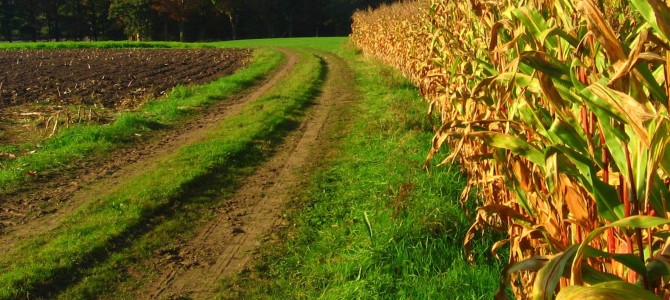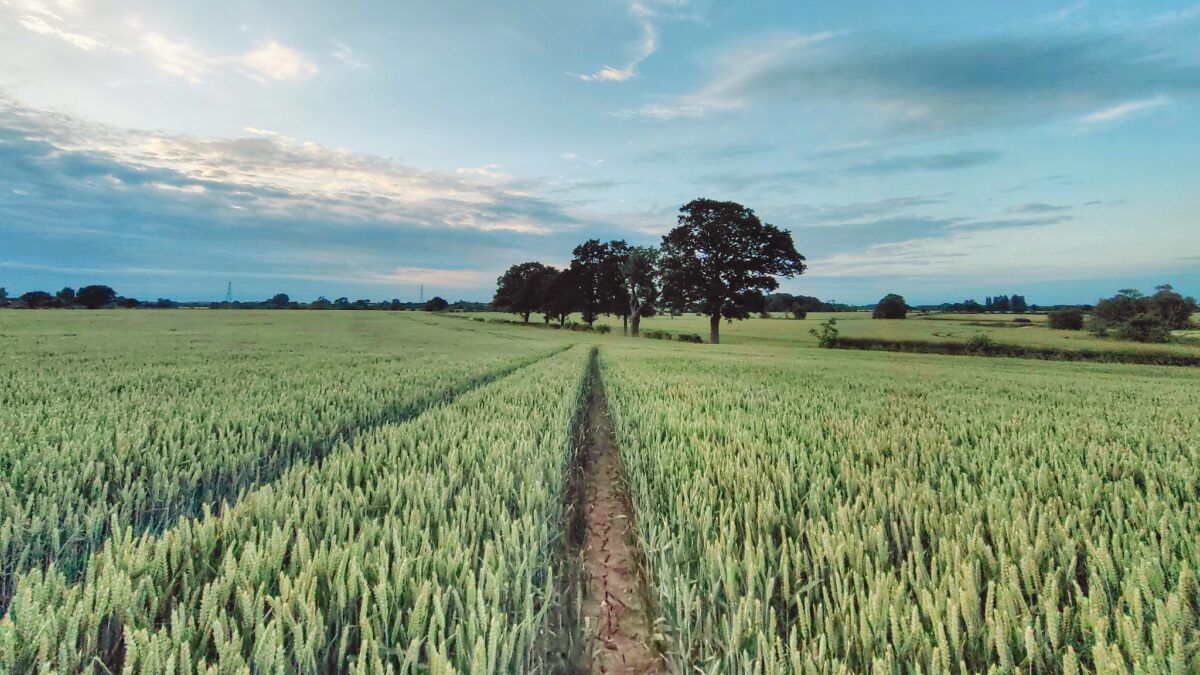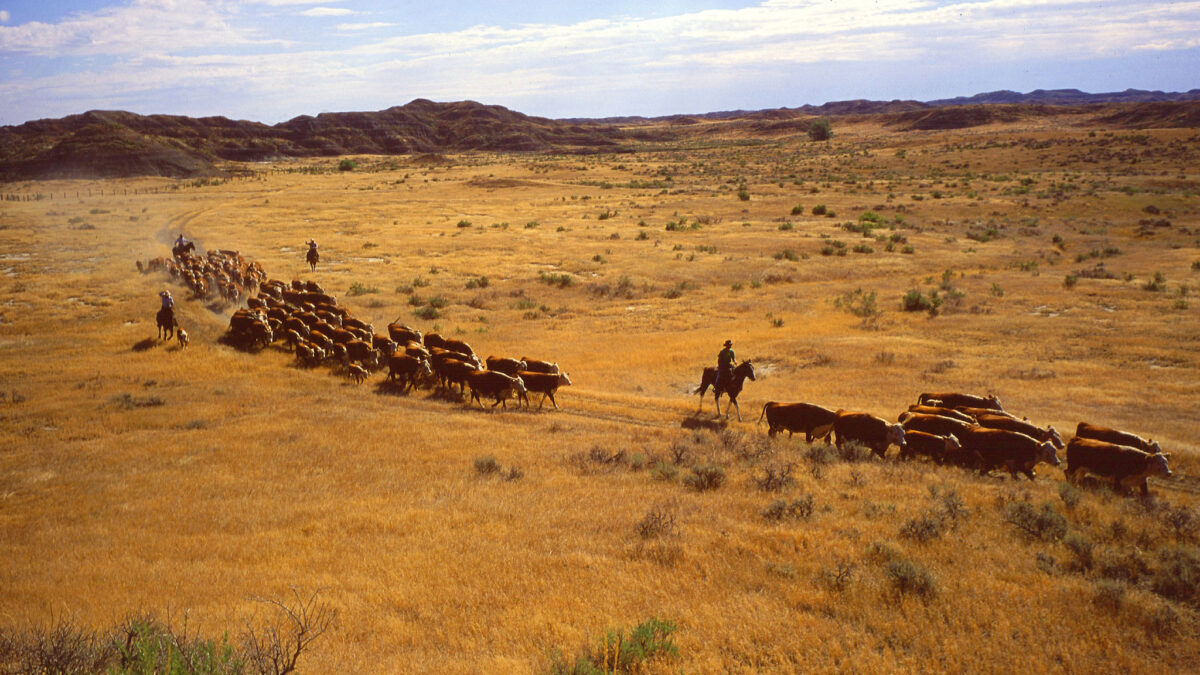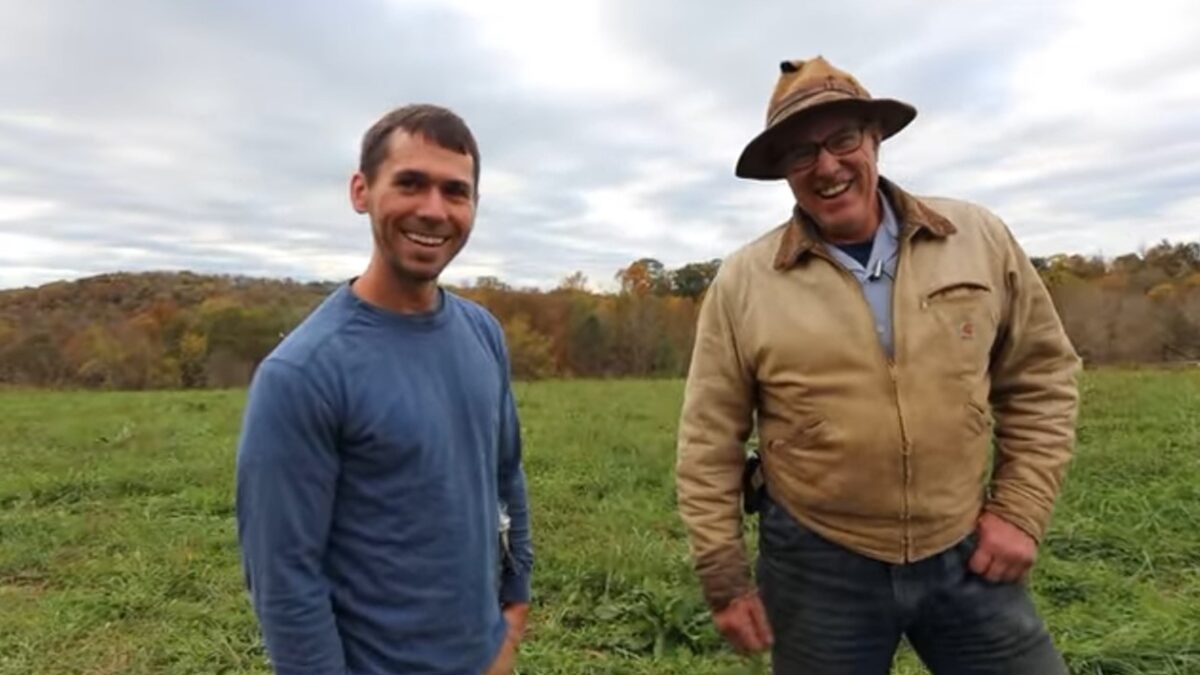
The future of farming is a fraught topic. How do we pass on a legacy of farming to the next generation? How do we keep America’s food system alive—even as its producers have dwindled to 2 percent of the population, or less?
In 2012, the U.S. Department of Agriculture found that the average farmer was 58 years old (up from age 50 in 1982; the number has risen each census year). Many of these aging farmers are without children or relatives eager to carry on the family business. Some will eventually sell to another farm operator. Others sell to land developers—or their children eventually do.
Ted Genoways’ new book, “This Blessed Earth,” tells the story of one successful generational farming transition. Genoways, who serves as editor-at-large for the Pacific Standard, spent a year interviewing and working with Rick Hammond, his daughter Meghan, and her boyfriend Kyle Galloway at their five- (nearly six-) generation family farm in Nebraska. Throughout the book, Genoways talks to the Hammonds about their farm, participates in its seasonal rhythms, and chronicles its history.
The History of Corn and Soybean Production
The Hammonds’ story is common in some ways, unique in others. The family plants a combination of corn and soybeans, and raises cattle, like many in the nation’s heartland. They have battled debt, drought, and falling commodity prices. But they have also faced unique challenges: Hammond was one of the first (and perhaps the only agricultural producer) in the area to oppose construction of the Keystone XL pipeline across his land. At first, his reasons for this were personal. But as he researched the pipeline and talked to others, he grew more concerned about the pipeline’s larger communal and environmental impact, as well.
“This Blessed Earth” is part history, part interview, and part research. Genoways has an interesting section on the history of soybean production, which chronicles Henry Ford’s involvement in U.S. soybean development. The infamous businessman began experimenting on the bean in the late 1920s, and planted soybeans on his 8,000 acres of Michigan farmland. Through his encouragement, “farmers put more than 35,000 acres of land into growing soybeans,” notes Genoways. In the late 1930s, Time magazine declared Ford “a bean’s best friend.”
In some ways, Genoways’ exploration of Ford and soybeans seems like a fascinating tangent; however, it fits into his larger profile because of how government and big business have both affected farmers’ decision-making paradigms and personal growth. The Hammonds’ farming methodology was influenced by people who lived and farmed long before them, people who largely set the course for U.S. agriculture today. Our farming landscape was shaped by machinery like the tractor, families like the DuPonts, and innovators like Ford; it was also influenced by the rhetoric and politics of people like Earl Butz, Richard Nixon’s Secretary of Agriculture, who told Americans to “get big or get out,” and to plant “from fence row to fence row.”
Are We At Risk of Another Farm Crisis?
The proliferation of these two heartland crops—corn and soybeans—has grown increasingly controversial in recent years. Although farmers are moving toward more cover cropping, no-till methodologies, and other conservation-minded practices, many Americans feel the overproduction of these two crops hurts the economy, the soil, and the consumer.
Although many arguments against homogenizing agriculture are environmentally minded in nature, some are also economic. One of the tensions at the heart of Genoways’ book is the anxiety Hammond and his daughter feel over corn and soybean prices. They have dropped steadily in recent years, even as farmers plant more and more in an effort to make ends meet.
In 2014, Genoways notes, American farmers set new records for corn and soybean production: they harvested 14 billion bushels of corn, and nearly 4 billion bushels of soybeans.
“With so much production, roughly three-quarters of the harvest nationwide went directly into bins, as every farmer waited and prayed for rebounding prices,” writes Genoways. “They never came. Instead, prices continued to slump as yields continued to grow, and whispers spread about the possibility of another Farm Crisis.”
Changing Attitudes Toward the Farm
Hammond returned home from a two-year stint with the Peace Corps on the cusp of the farming crisis. He married a young woman named Heidi, and began helping her father, Tom, with the family farm. Tom was a traditional farmer: wary of accruing debt, cautious regarding untested decisions. Hammond, however, wanted to drastically expand the farm while land prices were low. And he did—despite his father-in-law’s protests.
“Because of my aggressive ways, we have continued to stay in debt for thirty-two years and always pushing, doing a lot more than we should,” Hammond admitted to Genoways. “My idea was to try and build an operation that I could hand down to my children with as much land as what were benefited when Heidi’s share was handed down to her. So I did everything I could to get ahead and to turn that success into more and more contiguous land.”
Hammond sounds regretful as he looks back on his past, adding, “I put it on my kids, this guilt for my avaricious and aggressive ways—that I was doing it for them. That was my excuse in my head. … it’s caused a hell of a lot of stress on my family. Was that worth it? I don’t know. That will be for them to decide.”
But Meghan believes her father is unduly hard on himself. While she’s interested in organic farming and more sustainable methodologies, she also thinks people often underestimate the challenges inherent in farming.
“The emphasis on corn and soybeans started in the twenties,” she notes. “It’s not a development of the last few years. Yes, it’s gone crazy since the seventies, but we spent a century going down this road and everything—the development of tractors, the development of seeds, the development of chemicals—everything has been built around a certain way of doing things.” Meghan believes it’s important to consider improvements and changes. But deciding everyone should “start raising organics” is not the answer in her mind.
Farm Consolidation’s Impact on Community
The Hammonds’ town has suffered the same economic decline and “brain drain” that has affected other communities across America’s heartland. The only school and restaurant in town are “empty and abandoned,” reports Genoways. “There’s no work, nothing to do, no reason to be there instead of anywhere else.”
Today’s large farms are a patchwork of land that once belonged to smaller farmers—most of whom have failed, left, or retired. As farms consolidate and mechanize production, jobs (and therefore, people) disappear from the local community. A town of 50 small farms can keep up a restaurant, a school, a church; a town with three or four large farms cannot.
“When families like the Hammonds talk about the patches they own and farm, it is a kind of geography of the gone,” says Genoways, “The Metz place, Roger’s dry-land patch, Karen’s quarter. It’s all the people and families that disappeared off the land, leaving only their names, like tombstones, as a record of the generations spent there.”
This problem isn’t easily resolved; several of America’s rural ghost towns are already beyond hope. But unless and until more jobs are brought to rural towns like the Hammonds’, it will only get worse. Some believe this death is both unavoidable and unsentimental fact: like mining towns that sprung up around the turn of the century, or postindustrial towns whose plants and factories have shut down, these communities deserve to die. Their residents will find community and jobs somewhere else.
What Does the Future of Farming Look Like?
Genoways touches on this problem. Other issues—like the proliferation of GMO crops by seed companies like Monsanto and Pioneer—he considers in great depth. While some of the books’ sections are a bit slow-moving, Genoways’ research and robust consideration of modern farming makes the volume worth reading.
Farming’s future is about finding young people who want to farm; it’s also about determining which methods are most viable, duplicable, and sustainable in the future. Thus, we see fraught tensions between more conventional farmers and organic farmers—between factory-farm egg producers and organic pasture-focused producers, for instance, or between GMO-focused corn and soybean production, and the growth of small-scale, diversified fruit and vegetable farms. We also increasingly see tensions between the old and the young.
In Genoways’ book, such questions and tensions are buried just beneath the surface. As a journalist, Genoways’ method is more show than tell. But it’s evident he believes the way we farm has consequences, and that the dissolution of family farming has consequences.
The longevity it represents, the ability to pass down an asset from one generation to another, has blessed many of the nations’ heartland farms in the past, enabling them to survive despite challenges and hard years. The fact that the Hammonds have managed to stay in business this long is a blessing. But much depends on the course of action this new generation of farmers decides to take—and whether they can survive what could be America’s next farming crisis.
As Hammond tells Genoways, “The Meghans and the Kyles of the world, they could be in real trouble.”









